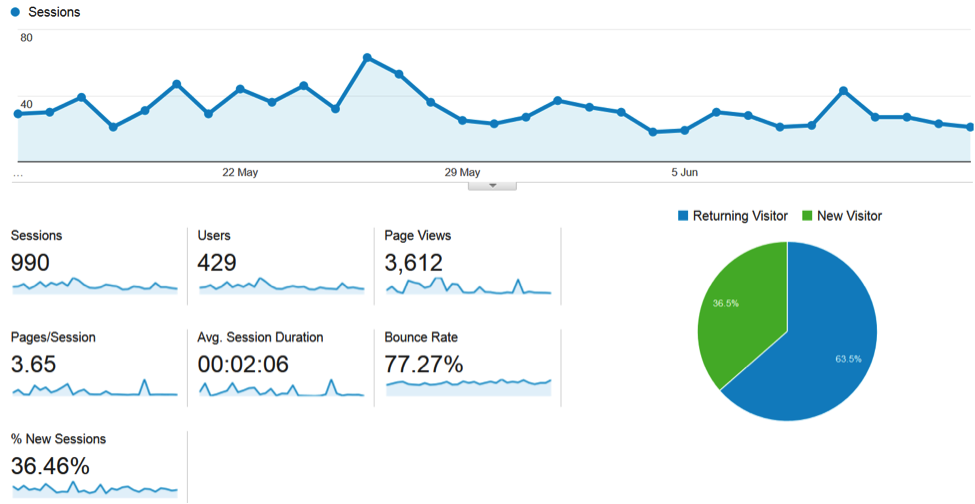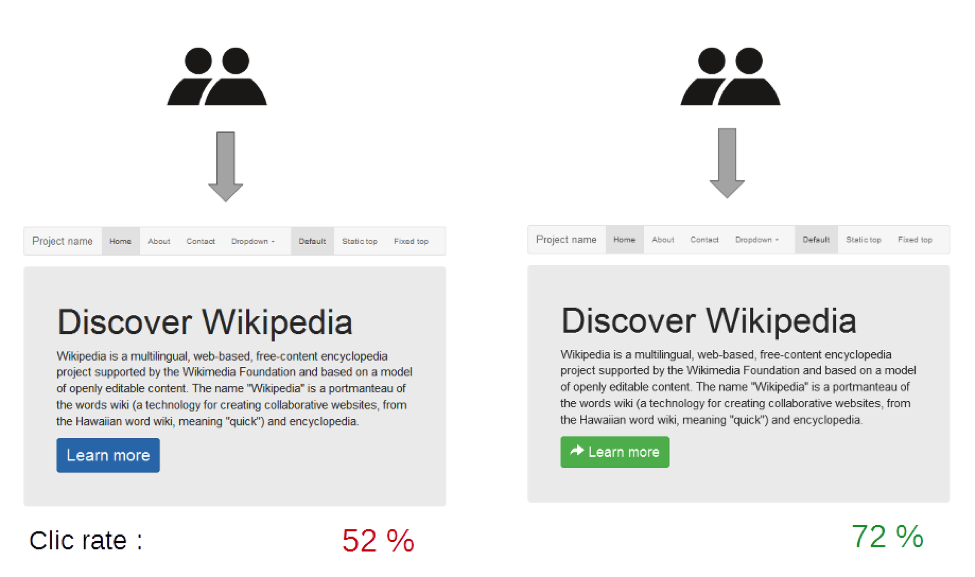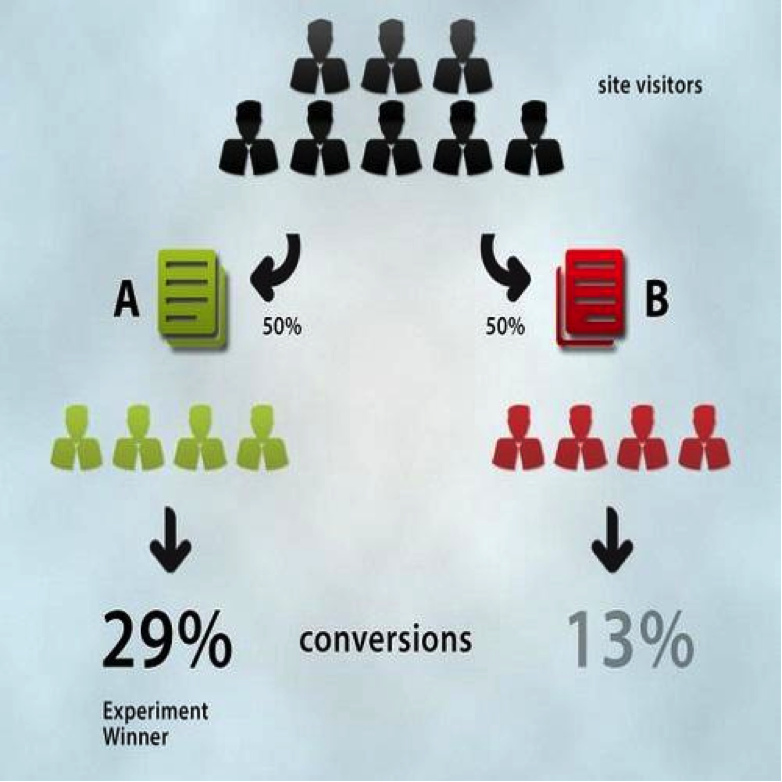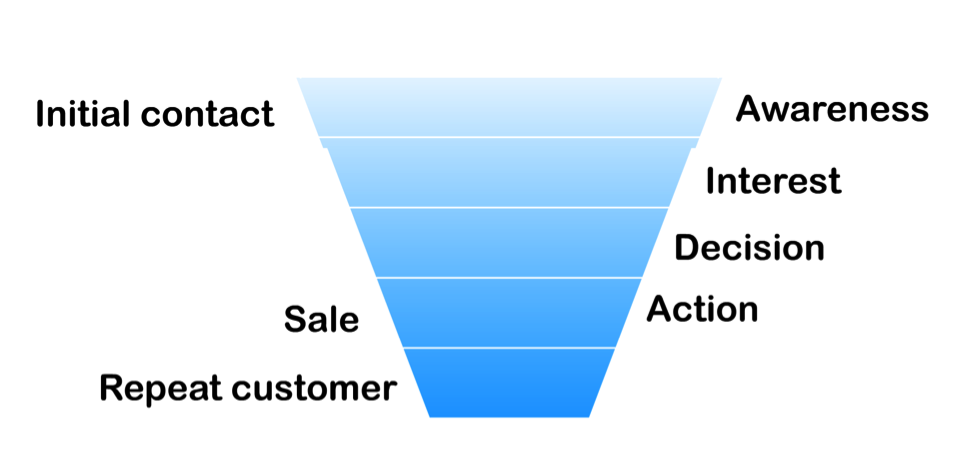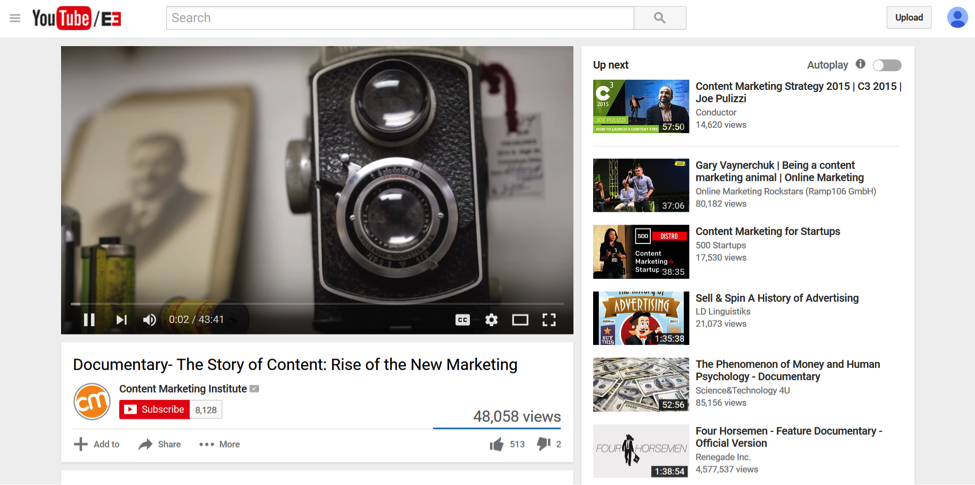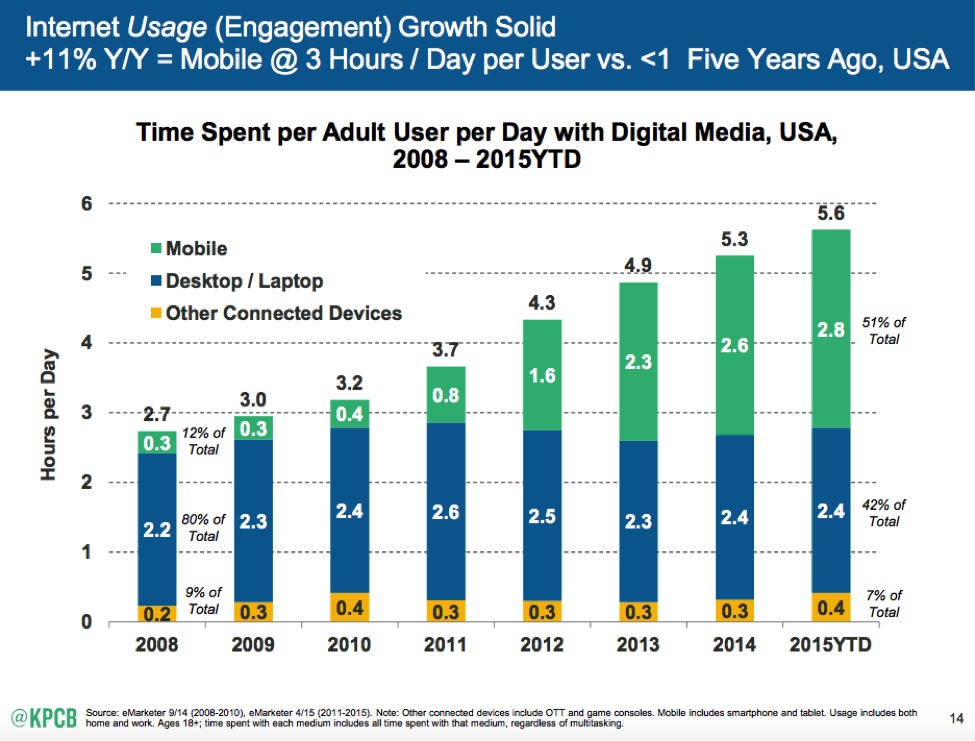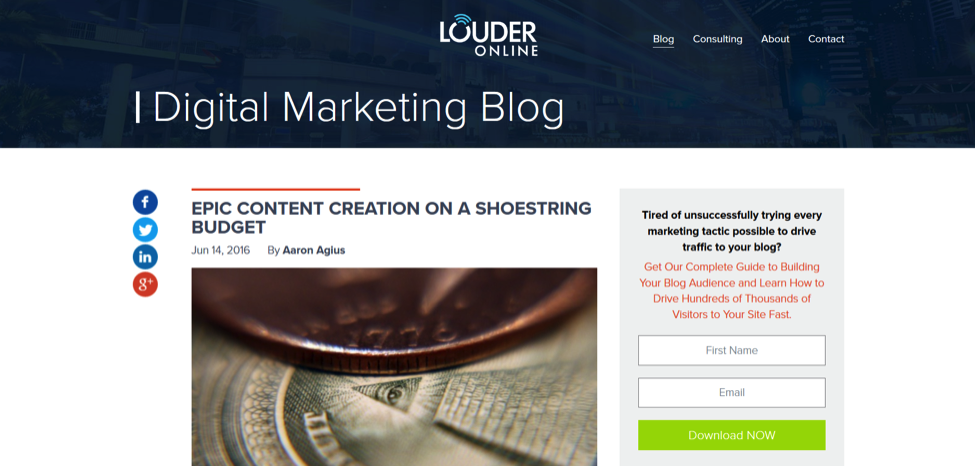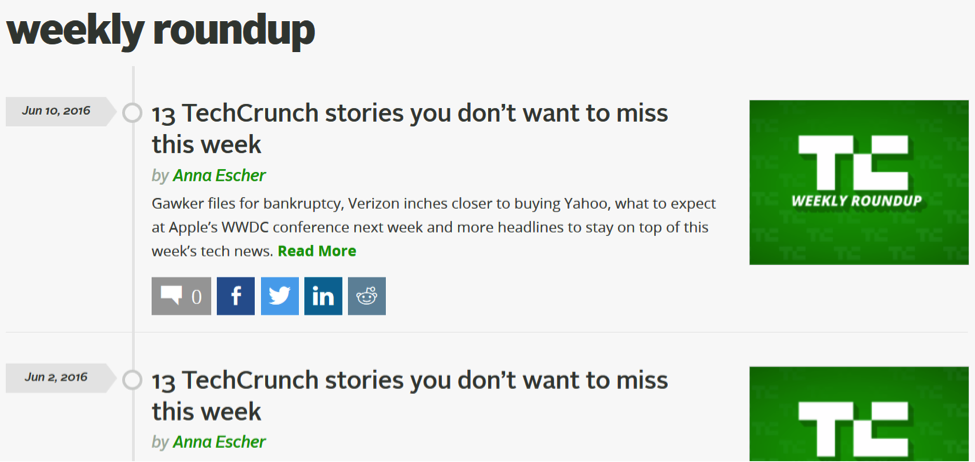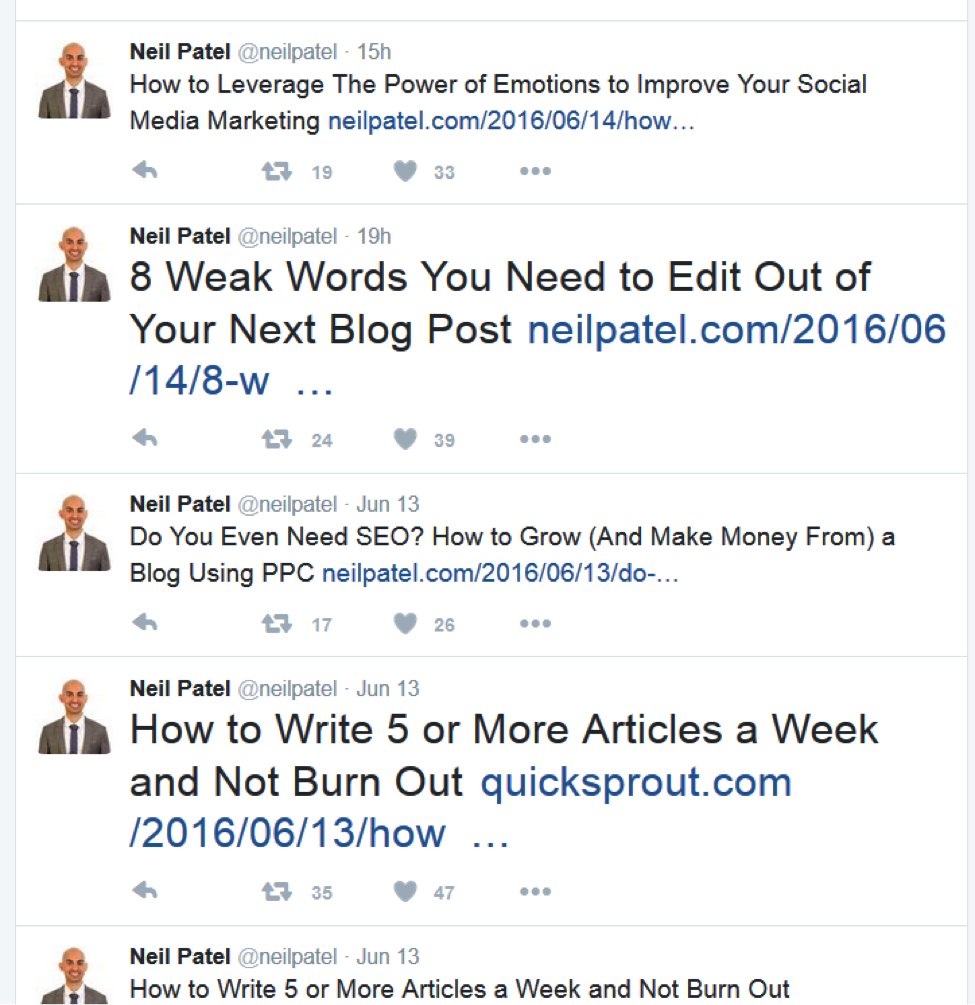Content marketing is a wonderful tool for bringing customers to your business.
- The problem, though, is that it’s not always easy to figure out the best way to maximize your profits.
There are plenty of tips and techniques out there for getting the biggest possible ROI from each piece of content you produce. But how do you know what to trust?
Here are some of my recommended steps for increasing ROI, as well as how you can go about building up a more financially successful content marketing campaign:
1. Create and Stick to Meaningful Goals
Accurately tracking your ROI is crucial to being able to increase it.
- In order to build a profitable content marketing campaign, you actually need to know what’s successful.
- This will help you to prioritize resources that are making you money, and phase out elements of your campaign that are less financially viable.
Your focus should be on attracting and retaining customers – this is the stat that helps drive your ROI.
That said, it’s important to use other metrics to help measure how well you’re doing.
- Set small goals that can be measured for each piece of content, such as web traffic, which can be used to get a better idea of how your campaign is performing as a whole.
When setting goals for your campaign, you need to pick concrete, quantifiable number-based metrics that you can track.
- While many companies look to use content marketing to improve their reputation, this is a difficult goal to track.
- It’s harder to measure your ROI when you compare your spending against your results.
- Instead, try numerical goals, such as how many leads your company is generating or how many followers you’ve gained on social media.
These kinds of goals help you to more clearly put a price on your content marketing efforts, as you’re able to see how much money you have to spend to grow your reach.
Once you’ve got a better idea of this, it’s easier to build on successful content and increase your ROI.
2. Perform Regular Testing to Find What Works and What Doesn’t
At different times in your content marketing efforts – especially when you first start out – you’ll feel like you’re stabbing in the dark to try and figure out what people actually want from your content.
- To make the most from your investments, you’ve got to find out what works and what doesn’t – and you’ve got to do it as quickly as possible.
- To do this, I recommend constant testing of every aspect of your campaign you can.
Testing and trialing different ways of presenting your content is key to figuring out what exactly will draw in new and existing customers.
- I don’t recommend blindly trying out all sorts of ideas with no structure, though – you need to have a carefully-designed system in place to help find the ideas that’ll most help your ROI.
A/B testing is a tool that’s gained a lot of popularity over the past few years of content marketing, and with good reason.
- By simultaneously testing two different versions of your content, you can spot which approach works best when everything else about the content is exactly the same.
While A/B testing can help every aspect of your conversion funnel, it’s particularly useful for finding what style of approach helps to initially draw in audiences.
- You can A/B test a series of headlines and images for your content to see what stands out most for potential website visitors.
- Doing this for every piece of content you create helps to maximize the number of visitors you draw to your site with every piece of content you release.
Going beyond this, I also recommend trialing different topics and styles for your content to see if your approach can be improved to maximize your ROI.
Again, though, be careful to keep the overall approach of your content the same, and only try out a different style for occasional pieces – that way you won’t lose momentum on everything that’s already working well for your campaign.
3. Focus on Middle-of-the-Funnel Content
As important as it is to draw visitors to your site, all of your effort is wasted if you can’t convince them to make a purchase while they’re on your pages.
- Plenty of companies spend all of their efforts working on getting people to their site, and then drop the ball once potential customers are actually there.
- Very, very few site visitors will be instantly inspired to make a purchase upon seeing your site – they’ll need extra encouragement, and that means guiding them through the conversion process.
It’s important not just to focus on bringing in new traffic, but also on creating content that helps visitors to convert.
- This can include guidance for using your products, or explanations on why your products are the best thing for their needs.
- This kind of content won’t be a massive draw for new site traffic, but it’s exceptionally helpful for return visitors and anyone who’s wavering about making a purchase with you.
If you’re only tailoring your content to bring people to your site, you might get a large number of visitors, but only a small percentage will actually buy something.
- By working to help more people make purchases through smart content, you potentially reduce the number of people your content draws to your site.
- That said, you can dramatically increase the number of visitors who go on to make a sale.
- This is far better for your ROI in the long run.
This ties back into your goals and testing – if your goals are all oriented towards getting people onto your site or increasing your brand’s persona with lay people, you’re not necessarily reaching out to the right audience.
By creating content that supports the entire conversion funnel, you’re helping to improve your ROI even if your site visitor numbers drop temporarily.
4. Produce More Multimedia Content
Over the past few years, content marketers have discovered just how important multimedia content is to building an audience.
- Not only do visuals and video content draw more people to your site, they’ll stay longer and be more willing to engage with your content as a result.
- Multimedia content also helps you to reach an entire subsection of your target demographic that don’t have any interest in text-based content, but are thrilled by more visual materials.
It’s important to note that YouTube is the second most popular search engine on the internet – if you’re not making content for this tool, you’re missing out on a large proportion of potential customers.
- Creating high quality, visually impressive multimedia content such as infographics and videos is likely going to increase your spending.
- This might make some companies hesitant as they worry it’ll affect their ROI in the short term.
In reality, though, producing a lot of high quality multimedia content will work wonders for your market reach, and will greatly increase your customer base.
This will help to reimburse you for your additional spending as your ROI increases.
5. Develop Content for Mobile Users
Catering to the needs of mobile users is crucial to the success of your content marketing campaign.
- Mobile traffic now makes up over 50% of all internet traffic.
- The average person spends significantly more time looking at the internet on a mobile device than they do on a desktop.
This makes a big difference in how content marketers should approach producing content, and the role that mobile should play in online campaigns.
- For several years now, Google has been weeding out any traffic that doesn’t cater to mobile, as a website without a solid mobile version isn’t going to be a good fit for users browsing the web on their devices.
- This will be reflected in your traffic and in your ROI – if mobile users can’t get a decent experience on your site, they won’t stick around.
The ways that mobile will affect your ROI goes beyond website architecture, though – even your content will need to change its approach.
Mobile screens are vertical, whereas desktops are horizontal.
- This means that content that fits perfectly on a desktop won’t be as comfortable on a mobile screen.
- Your content should therefore be thinner and longer, rather than wider and shorter.
When you make sure your content is inviting to mobile users, you avoid parts of your audience getting bored of your content and leaving because of its presentation.
This will lead more customers to make sales, which increases your ROI.
6. Increase Your Content Output
Sometimes the best thing you can do to increase your ROI is simply to produce more content.
- The more often your site is updating, the more frequently customers will return to see your latest pieces of content.
- When your site is updating regularly enough, you’ll find that many visitors will form a habitual pattern of checking your site multiple times throughout the week.
- The more they visit your site, the more likely they’ll be to make a purchase as they get to know your brand.
Producing more content is important, but you should be careful not to let your quality suffer as you ramp up production.
- Your content needs to shine; otherwise, you’ll lose visitors rather than gaining them.
Sometimes this can mean spending more money to produce higher-quality work:
- Outsourcing parts of content creation that can be done by others can free up enough time to produce more quality work in a shorter time.
- This investment usually pays for itself as it will lead to an exponential growth in traffic, sales, and a higher ROI.
It’s also worth considering relatively cheap methods of producing more content.
- Content aggregation or curation can help bring in resources from other websites to give your audience a reason to visit regularly.
- Reworking or republishing older content from your archives can be a good way to draw more attention to it and to increase your revenue for each piece you’ve previously produced.
Building a bigger archive of content is useful to your site’s image, search ranking, and audience size.
While it might cost more money initially, it’ll dramatically increase your ROI when done right, and you’ll be fully reimbursed for your larger spend.
7. Build Your Network of Influencers
At the end of the day, your content can only bring in a return that’s equal to the distance it travels.
- If your content is only seen by a few people, its ROI is going to be pretty small.
- If you can get lots of people to engage with your content in a meaningful way, it’ll bring in more revenue as a result.
Therefore, to increase your ROI, it’s worth working to expand your network of contacts within your industry.
- Befriending influencers means being able to use their support to reach more potential customers, as they share your content with their own audiences.
- These connections will also lend your content respectability, meaning that more buyers will look to you when they’re deciding to make purchases.
Seek out the people, companies, and media channels that have a big impact on the way your core customer base thinks and acts.
- These are the people that you want to build relationships with.
- Do more than ask their help to promote your content – work to build meaningful relationships with them.
- This will help get them on board for everything you do, rather than just promoting a single piece of content.
Beyond this, it’s also worthwhile to build relationships with individual customers where possible.
- Place a particular focus on repeat customers. If you can get people to make multiple purchases, it means you make more return on each customer you’ve developed a relationship with.
- The key to this, as I spoke about earlier, is producing plenty of content that helps people, no matter where they are in your conversion funnel.
As you build relationships with these key members of your industry, you’ll see greater returns on each piece of content you develop.
Each piece of content you produce has the potential to bring in a lot of revenue.
- It all comes down to how it’s structured, presented, and distributed, as to whether or not it lives up to its potential.
Use the steps I’ve talked about here to increase the amount you get from your content.
As your ROI grows, you’ll gain a better understanding of how to make content marketing work best for your business and your industry.
What tips do you recommend for building up your ROI? How do you increase your revenue from each piece of content? Share your thoughts in the comments section below.
Images: Pixabay, Google Analytics, Wikimedia, Flickr, YouTube, Smart Insights, Louder Online, Tech Crunch, Twitter, Pixabay.




